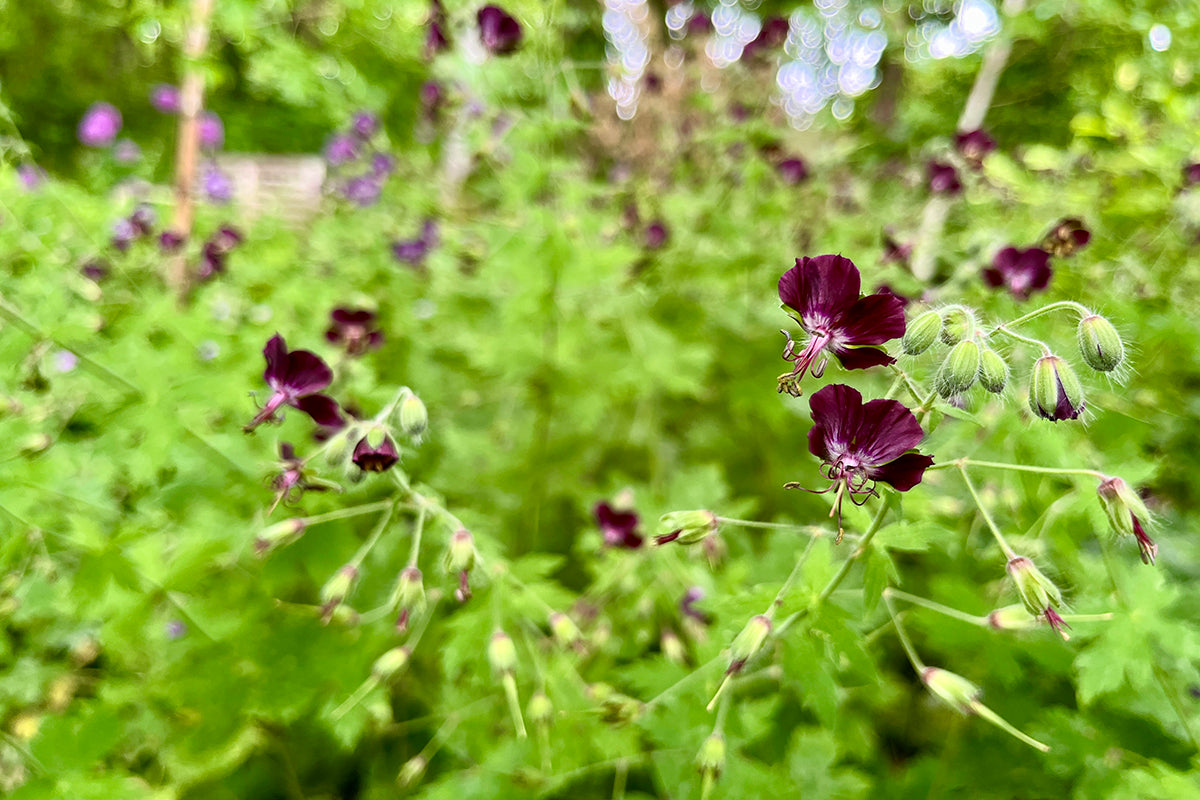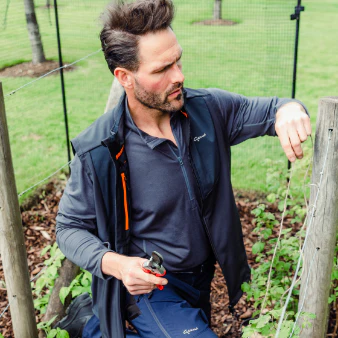The dark side

Our woodland garden at Genus HQ is located around centuries old quarry workings. Spoil from the subterranean stone mine was piled up creating a 30 metre long mound nearly 3 metres high. Over time the area has become dominated by mature sycamore trees while on the floor snowdrops and bluebells proliferate.
When we first moved here we very quickly realised this would be the ideal spot to create a meandering woodland walk. A gravel path now loops around one of the trees and three borders have been created, planted with a variety of perennials and shrubs.
The middle border is the highlight at this time of year. As the snowdrops fade and retreat underground, geraniums start to take over. Geranium nodosum 'Clos de Coudray', has glossy three-lobed leaves and purple to pink flowers. It propagates well - we started off with just a few plants but found they divide well and soon spread around in the dark shaded areas where many geraniums struggle.
Its bed-fellow is Geranium phaeum (pictured). Known as the dusky cranesbill or mourning widow it displays stunning black (actually dark purple) flowers on tall 3ft stems. There are a number of cultivars. ‘Raven’ has particularly ‘black’ flowers. ‘Album’ has pure white flowers with a pale yellow eye, and ‘Waterer’s Blue’ is a very pale blue. Many plants recommended for shade quite often survive rather than thrive but we can highly recommend these two geraniums for awkward spots where shade is an issue.











